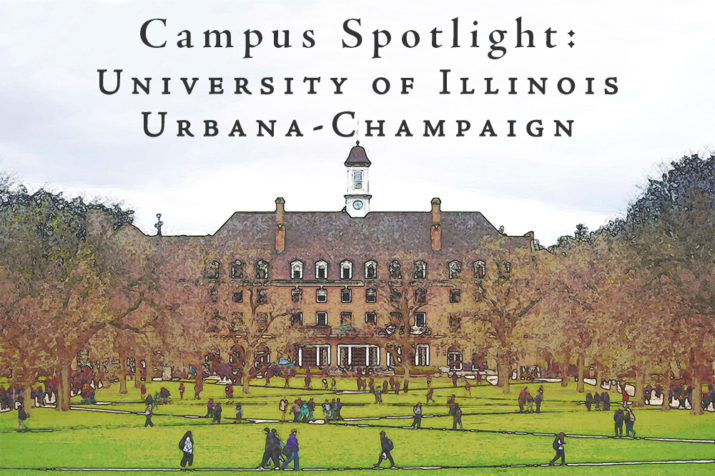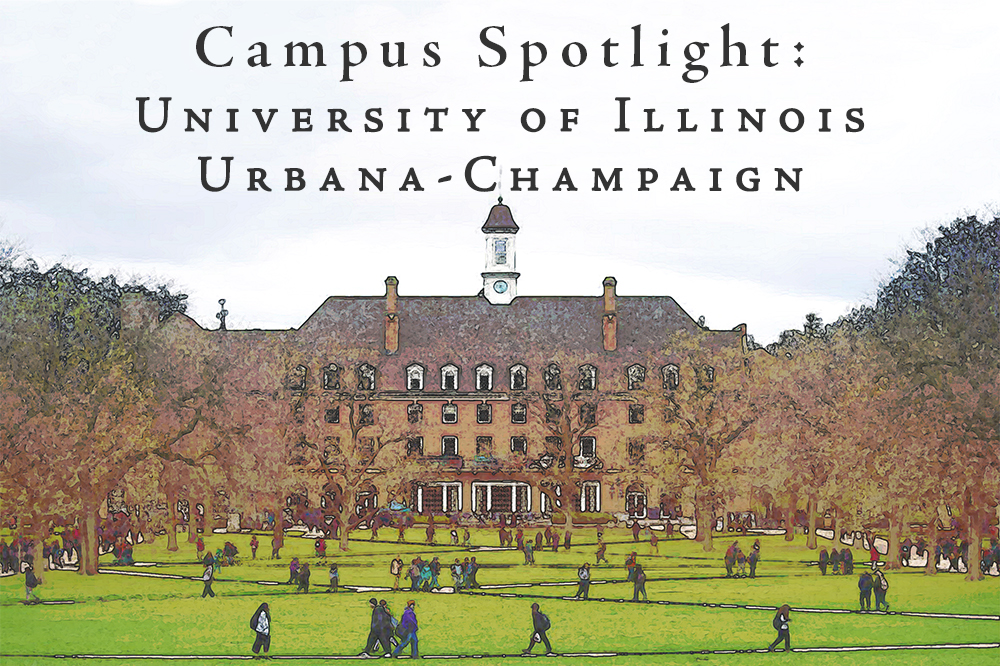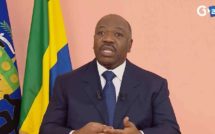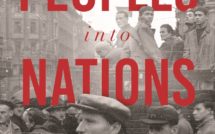

A spotlight on the University of Illinois at Urbana-Champaign
The University of Illinois at Urbana-Champaign is a hub for research in science and technology and in how societies in North America and Europe think of “innovation.” Researchers at the University of Illinois developed Magnetic Resonance Imaging and the prototype for the first browser for the World Wide Web. The University has also fostered path-breaking expansions of access to education for people with disabilities. As visitors to campus have surely appreciated, the university’s location in east-central Illinois, a few hours away from the major metropolitan area of Chicago, has also provided a home for rich area studies scholarship, teaching, and learning. Currently, the university hosts four Title VI area studies centers, including the European Union Center (EUC). The EUC has supported area and language instruction, particularly through Title VI grants, FLAS fellowships, and various Jean Monnet grants from the European Commission. The University of Illinois’s strength in area studies, and especially European studies, is built on the exemplary work of faculty that span the humanities, social sciences, sciences, and applied fields.
This spotlight is the first in the Campus series to focus on language instruction. It is also about responding with innovation to tectonic shifts in the landscape of area and language instruction in US higher education. Assembled during the COVID-19 pandemic, the contributions to this spotlight are informed by emerging needs to rethink engaging students in the study of Europe and European languages. Ironically, across the US, many institutions have cut back on their commitments to language instruction at a time when many of the same institutions have overall successfully intensified their efforts to encourage students to study abroad—with Europe being no exception. Yet, calls have also grown for a more critical stance toward European legacies around the world, challenging the kinds of relationships to European languages and cultures our coursework facilitates.
The pieces here highlight different approaches to drawing students to the offerings of language departments. Emanuel Rota’s reflections from a short-term course for honors students that he has led in Italy with his colleague Eleonora Stoppino offers one model that begins with a presumption of linguistic ignorance and draws students into the complexities of a topic that begs eventual command of other languages for a deeper grasp: migration. Managed culture shock and reflexive encounters with migrants and NGO workers bring students into conversations about a major global issue of our time situated in a particular milieu.
The syllabus that Eda Derhemi has shared, developed with her colleague Zsuzsanna Fagyal, reminds us of the potential value to thinking outside of national boxes in framing for students how one can enter the study of Europe through its border regions. Engaging students with the Mediterranean offers a vehicle for drawing students to languages such as Italian or French through the discovery of how those languages and nations have been shaped by contact with other peoples of the region (including from areas that many students might think of as “outside” Europe, such as North Africa, the eastern shore of the Mediterranean, or even the Balkans). The course nimbly introduces students to the importance of less-commonly taught languages (LCTLs) and the interplay of language and culture for understanding this region.
This spotlight concludes with reflections from graduate student Tricia Thrasher that are particularly poignant at a moment when the pandemic has dramatically generated questions about affordances of technology for language instruction. Thrasher’s dissertation research on uses of virtual reality (VR) suggests the potential for VR to reduce anxiety in contexts of language instruction. Yet Thrasher’s piece also points out that one of the most valued tools to date for the promotion of language study—physical immersion in a community of the language through travel to it—has had its inequities.
It could well be that for language and area study in US higher education to emerge from the crisis spawned by COVID-19, it will do so thanks to innovations that were already being developed to engage students with language departments. The fact that the two courses highlighted here are taught in English is not intended to suggest that language departments drop goals of drawing students to the study of languages. Rather, the larger lesson of this spotlight lies in how we imagine the creation of contexts that motivate the learning of languages, so that more of us come to experience the new worlds that only multilingualism can open.
-
“Studying Migration in a Study Abroad Setting” by Emanuel Rota
-
“Virtual Reality Meets Language Teaching” by Tricia Thrasher
-
“Syllabus: Languages and Cultures of the Mediterranean” by Eda Derhemi
Jonathan Larson is associate director of the European Union Center at the University of Illinois at Urbana-Champaign. A linguistic and sociocultural anthropologist by training, his research has explored the interactive foundations of critical thinking across political systems, pedagogies of neoliberalism in Slovakia, scandals of surveillance in East Central Europe, and the internationalization of higher education.
Published on August 4, 2020.




